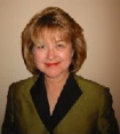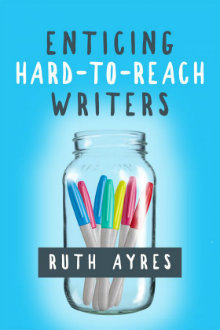Why We Need to Entice Hard-to-Reach Writers
Enticing Hard-to-Reach Writers
By Ruth Ayres
(Stenhouse Publishers, 2017 – Learn more)

This is a different kind of book on teaching writing. It reads like a memoir and is written by the mother of four adopted children, including two sibling girls from “hard places” and Jay who had been in the foster system for seven years.
Ruth Ayres is also a writer who knows how to build a story. Her current title is “Innovation Specialist” for the school district where she was a beginning teacher. She helps both students and staff tell their stories.
Ayers wrote this book not to give us a canned program but to entice fellow educators, parents, and writers to get our hearts right.
Seeing the child before the sentences

Teachers might change their ideas on a number of subjects after reading the book. For example, in Chapter 1, learn why loaning a pencil to a kid is important and why the collateral system doesn’t work, which I discovered in my first year.
Most teachers are familiar with Maslow’s Needs Pyramid, but Ayres emphasizes how basic needs have to be met before we engage in creativity. Freedom from fear is also necessary to develop new thinking paths in the brain, and healing takes time. Learn why fear may be disguised as willfulness.
Throughout the book, Ayers has interesting, sometimes funny and delightful conversations with her own kids. She believes that because everybody wants to be a hero, we need to show students how to be the heroes of their own stories. Heroes always have a guide and there is a QR code in the book to see, for example, where Glinda the Good Witch meets Dorothy.
Chapter 6 focuses on social media and stories. Discover the three keys to becoming a successful guide for students as they learn to tell their stories through technology.
Students putting their voice into writing
Part II explores how to entice everyone to make his or her voice heard. Why entice at all? Because sharing our stories makes the world better. Ayres relates her frustrations from her first year of teaching and tells how the book Clearing the Way (1987) by Tom Romano started her on her goal to meet the needs of young writers. She realizes she has to figure out what she’s doing as a writer so she can bring it to her classroom: “When we become teachers who write, our teaching is forever changed . . .” and we can make an impact.
Chapters 9 and 10 discuss why writing is challenging, yet essential, and what writing teaches us and how the practice of writing changes lives. Chapter 11 encourages teachers to list our core beliefs and emphasizes that Writing Workshop is a must.
Details for creating a Celebration Mindset
Part III (“Moves to Entice Students to Write”) is full of practical suggestions to get others to write. Ayers recommends a “Celebration Mindset,” focusing on what students do well or are almost doing, naming small improvements, and seeing errors as opportunities for growth. Discover the first steps to cultivating this type of mindset. We can’t wait for conditions to be perfect. Learn why both a product and process approach is best and see her “Writing Process Chart.”
I like her changing of the word “prewriting” to “collecting,” because as she says, “writers collect,” bits of information, dialogue, and “pieces of life.” She tells students that “a notebook is like a junk drawer for their lives.”
She shows how to make a plan using storyboards, oral storytelling, and writing drafts. Find out what a “Selection Day” is. Learn tools that encourage revision, such as the Carat, Spider Legs, Coding, and Sticky Notes. Learn the four steps of how to edit with a peer editor. I guarantee teachers will want to use at least one of the “Top Ten Formal Celebrations.” My personal favorites are “Toast,” “Poetry Jam,” and “Author’s Chair.”
Ayers advocates choice in writing projects. Student writers should make some decisions. See how Ayers validates student topic ideas and how to build genre knowledge.
Chapter 17 discusses finding and using mentors for primary and intermediate writers. Because I am using community mentors to confer with student writers in a project, I will copy and share her “Strengths to Notice in Basic Writers.” She gives other advice, such as “Be intentional about teaching one main point in every [student] conference.” She advises how to use “Share Sessions” at the end of a workshop.
Chapter 20 helps the writing teacher “Tap Technology.” Ayers explains how as a writer she uses Google Drive and social media.
A full circle
Ruth Ayres completes her book coming full circle in a touching way. In the beginning she introduced her daughter Stephanie who brought toy handcuffs to first grade. In the final chapter, Stephanie is twelve years old and in jail, taken away in handcuffs. Our reader hearts go out to this mother writer whom we know will never give up helping kids, and helping them learn to write, because she knows “when writers believe their words matter, nothing can stop them.”
Mary Langer Thompson is a retired principal and former English teacher. She received her Ed.D. from University of California, Los Angeles and lives in southern California in the high desert. Because of her school and community work teaching memoir and poetry, she recently was honored as a “Woman of Distinction” by her Delta Kappa Gamma, Iota Xi chapter.


































